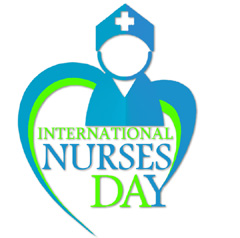Chronic Fatigue Syndrome (CFS) and Myalgic Encephalomyelitis (ME) is a very real disorder. It is known that Myalgic Encephalomyelitis is an autoimmune disease (with similarities to Lupus).
ME is a debilitating neurological disease which has been recognised by the World Health Organisation (WHO) since 1969 as a distinct organic neurological disorder with the code G.93.3. ME can occur in both epidemic and sporadic forms, over 60 outbreaks of myalgic encephalomyelitis have been recorded worldwide since 1934.
A major problem with CFS is that people who have the condition sometimes feel like no one believes them. “They’re often told it’s all in their heads, òhis name change acknowledges that this is a very real and very significant illness that can no longer be pushed aside” says Jacob Teitelbaum, MD, author of From Fatigued to Fantastic and an expert who specializes in the treatment of chronic fatigue and fibromyalgia.
In the 1980s Mark Loveless, an infectious disease specialist and head of the AIDS and ME Clinic at Oregon Health Sciences University, found that ME patients whom he saw had far lower scores on the Karnofsky performance scale than his HIV patients even in the last week of their life. He testified that a ME patient, ’feels effectively the same every day as an AIDS patient feels two weeks before death’. But in ME, this extremely high level of illness is not short-term – it does not always lead to death – it can instead continue uninterrupted for decades. Myalgic Encephalomyelitis can be one of the most debilitating and devastating illness there is.
The typical patient seeking medical care for chronic fatigue syndrome (CFS) is a woman in her mid-20s to late 40s. However, anyone at any age can develop this illness. Children and teenagers are also susceptible to the illness and children as young as five have been diagnosed with M.E. (M.E. can occur in children younger than five, but this is thought to be rare.) One hundred thousand kids are estimated to have M.E. in the US alone and a recent study in the UK found that M.E. was by far the most common reason for a child’s long term absence from school.
Recent CDC studies indicate that the prevalence rate in adolescents is slightly lower than that in adults. Cases in children under 12 years old appear to be much less common. Without objective diagnostic criteria, the prevalence of chronic fatigue syndrome is difficult to measure. In general, it is estimated that perhaps as many as half a million persons in the U.S. have a CFS-like condition, according to the U.S. Centers for Disease Control. Many people with CFS don’t know they have it. Because an estimated 84 to 91 percent of people with CFS haven’t been diagnosed yet, the IOM report says that the disorder’s actual prevalence may be much higher. Centers for Disease Control and Prevention, CFS is four times more common in women than in men. Though the average age of onset is 33.
M.E. is a distinct, recognisable disease entity that is not difficult to diagnose and can in fact be diagnosed relatively early in the course of the disease – providing that the physician has some experience with the illness. There is just no other illness that is even remotely like M.E. More than 64 distinct symptoms have been authentically documented in M.E..
The onset of M.E. is always acute and is frequently very dramatic; M.E. patients can very often tell you not just the day that they became ill, but the exact hour they became ill.
Myalgic encephalomyelitis is a systemic acutely acquired illness initiated by a virus infection which is characterised by post encephalitic damage to the brain stem; a nerve centre through which many spinal nerve tracts connect with higher centres in the brain in order to control all vital bodily functions – this is always damaged in M.E. (Hence the name Myalgic Encephalomyelitis.)
In 1956 the name Myalgic Encephalomyelitis was created. The term was invented jointly by Dr A Melvin Ramsay who coined this name in relation to the Royal Free Hospital epidemics that occurred in London in 1955 - 1957 and by Dr John Richardson who observed the same type of illness in his rural practice in Newcastle-upon-Tyne area during the same period.
Myalgic Encephalomyelitis represents an acute change in the balance of neuropeptide messengers, and due to this, a resulting loss of the ability of the CNS (the brain) to adequately receive, interpret, store and recover information which enables it to control vital body functions (cognitive, hormonal, cardiovascular, autonomic and sensory nerve communication, digestive, visual auditory balance etc). It is a loss of normal internal homeostasis.
A particularly important piece of research in these patients has demonstrated sensitivity of the vascular endothelium to acetylcholine (a major neurotransmitter and vascular dilator) and this finding may have implications for many other cholinergic pathways (which are extensive throughout the body). In M.E. there is evidence of disruption in ion channels in the cell membranes; changes in ion channel function from time to time offer a rational basis to explain the fluctuating symptoms, and such ion channel changes are known to be induced by physical activities, stress and fasting. If sodium channels are blocked in the open mode, this causes entry of sodium into neural tissues and muscles. This ingress of sodium is followed by water, which in turn leads to swelling of the neural tissues, a phenomenon observed both electron microscopically and by laser scanning microscopy. There is a continued loss of post-exertional muscle power (giving an additional loss of power), with delayed recovery for at least 24 hours, whereas sedentary controls recovered full muscle power after 200 minutes.
Like many “invisible illnesses,” CFS often comes with a social stigma. Many people living with CFS suffer from social isolation and depression. Chronic illnesses and depression often go hand-in-hand. It’s not uncommon for people with CFS to have to limit the amount of work they do, and the social activities they once enjoyed. Some are even temporarily bedridden. So it’s no surprise that that people with CFS often feel isolated and depressed.
Individuals with ME/CFS, their families and caregivers, employers, and society endure significant costs associated with ME/CFS. These costs are estimated to be $18-51 billion annually in the United States. Researchers estimate that at least one million Americans have ME/CFS, but only 20% are diagnosed with the illness.
May 12th has been designated as International Awareness Day for Chronic Immunological and Neurological Diseases (CIND) since 1992. The CIND illnesses include Myalgic Encephalomyelitis (ME), Chronic Fatigue Syndrome (CFS), Fibromyalgia (FM), Gulf War Syndrome (GWS) and Multiple Chemical Sensitivity (MCS). May 12th was chosen as it is the birthday of Florence Nightingale. She was believed to have suffered from ME/CFS. In 2010, a write-up was done to give a history of May 12th.
Lifestyle changes can help. Though there is no cure for CFS, certain behavioral changes can also help alleviate your symptoms. Getting a good night’s sleep (ideally eight to nine hours per night) is key, as inadequate sleep can worsen symptoms. Eating a well-balanced diet and exercising (within your ability, of course) can also help prevent CFS symptoms.
Source: everydayhealth.com | hfme.org | who.int | National Women’s Health Resource Center Inc | cdc.gov




